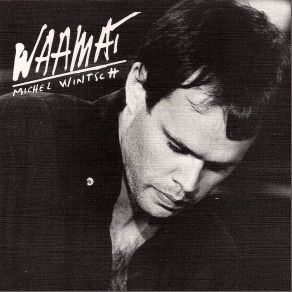Waamat
Download links and information about Waamat by Michel Wintsch. This album was released in 1994 and it belongs to Jazz, Avant Garde Jazz genres. It contains 9 tracks with total duration of 40:34 minutes.

|
|
|---|---|
| Artist: | Michel Wintsch |
| Release date: | 1994 |
| Genre: | Jazz, Avant Garde Jazz |
| Tracks: | 9 |
| Duration: | 40:34 |
| Buy it NOW at: | |
| Buy on iTunes $8.91 | |
| Buy on Amazon $8.91 | |
Tracks
[Edit]| No. | Title | Length |
|---|---|---|
| 1. | Waamat Introduction | 2:41 |
| 2. | Le Chant De La Terre | 2:23 |
| 3. | Voinitzev I | 4:40 |
| 4. | Voinitzev II | 9:04 |
| 5. | Voinitzev III | 2:18 |
| 6. | M For Murder | 0:16 |
| 7. | Saloniki I | 3:28 |
| 8. | Saloniki II | 8:06 |
| 9. | Helvetrange | 7:38 |
Details
[Edit]This is the last part of the trilogy that began with composer/pianist/arranger Michel Wintsch taking on expressionistically the figure and work of Ernest Hemingway and the compositional methodologies of Bela Bartok. On Waamat, Wintsch creates his own poetic oratorio of sorts. Using a septet to accomplish his idea — with an electric bass of course — Wintsch also collaborated with the poet Espe for an original text that could have come from Tom Waits and William Burroughs' Black Rider. While the vocals aren't present on every track, there is enough to make the accompanying music — even when there is no recitation — creepy, crawling, and boisterously uncomfortable. On the three-part "Voinitzev," for instance, where droning trombones play a funereal dirge throughout, they get interrupted by intervals where a clarinet plays a dolorous counterpoint and the lead-in of a marimba in quadruple time that signals Espe will be growing her dour words through the middle of the mix. It's like Steve Reich meets Messiaen's Quartet for the End of Time meets Slapp Happy with Dagmar Krause. On the two-part "Saloniki," Espe wails like Diamanda Galas in the background as tentative trombones, trumpets, marimba, and Martin Schütz's cello hover in the foreground. There are lines coming together in spite of the voice and counterpoint touched upon by the trumpets, before Wintsch enters playing a tarantella, then a gypsy song, with his accordion to the occasional bleat of Hans Koch's soprano saxophone and the ghostly repetition of the marimba. As Espe begins to wail in recognizable cadences, if not words, the rhythm becomes constant, assertive, pronounced, and foreboding in its minor-key deliberations as the piece picks up speed until it virtually disappears, leaving the vocal to encounter the silence alone. This is music that is metalinguistic; in other words, it is music about music as a process, but it is ultimately, if disconcertingly original and listenable.